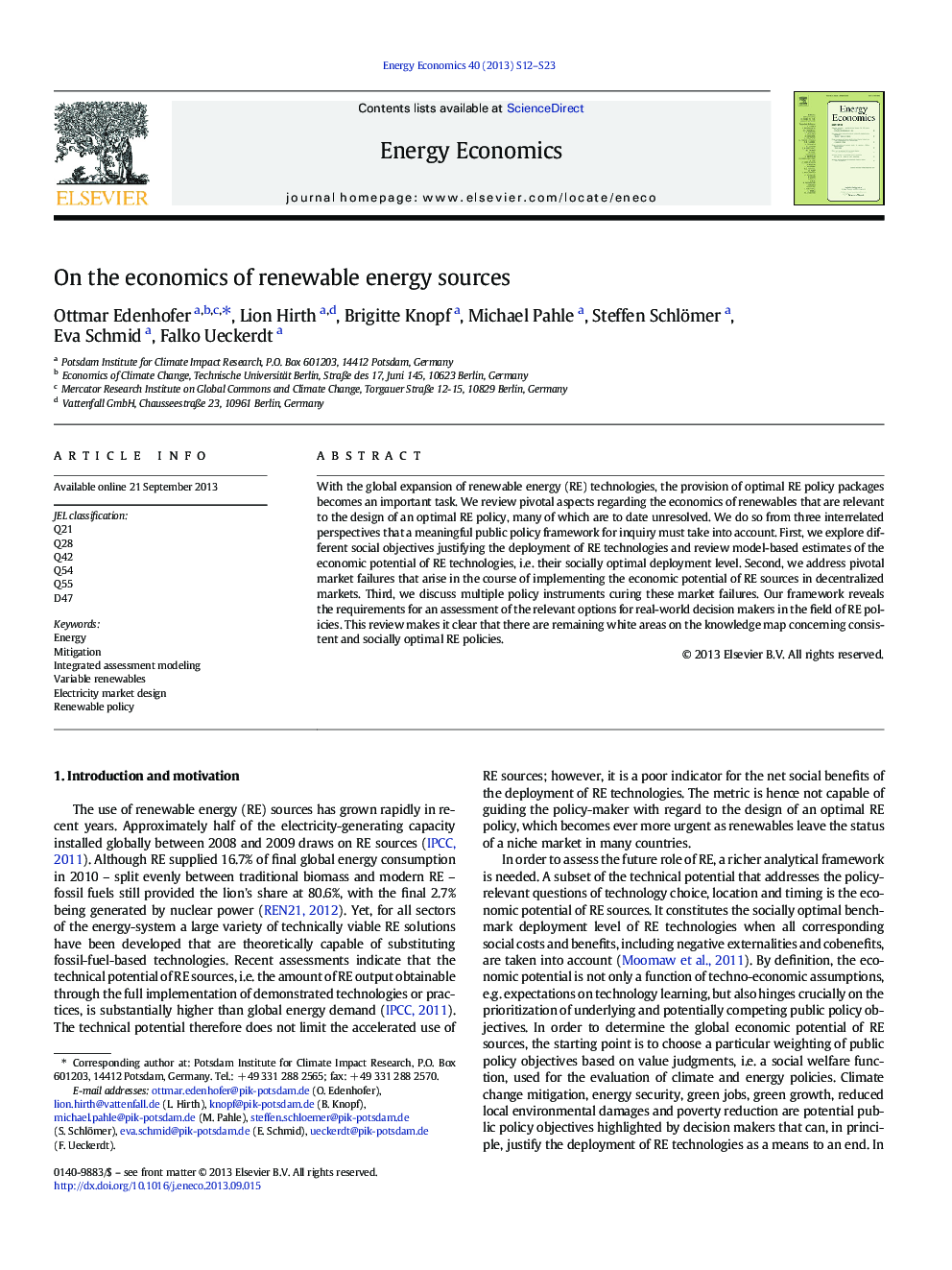| کد مقاله | کد نشریه | سال انتشار | مقاله انگلیسی | نسخه تمام متن |
|---|---|---|---|---|
| 5064935 | 1372299 | 2013 | 12 صفحه PDF | دانلود رایگان |
- Multiple public policy objectives can justify RE, possibly leading to co-benefits.
- The economic potential of RE is significantly higher than current deployment levels.
- But many models neglect the variability of wind and solar and require refinements.
- As technology market failures are transient RE support policies need sunset clauses.
- High shares of RE likely require a revision of current market designs.
With the global expansion of renewable energy (RE) technologies, the provision of optimal RE policy packages becomes an important task. We review pivotal aspects regarding the economics of renewables that are relevant to the design of an optimal RE policy, many of which are to date unresolved. We do so from three interrelated perspectives that a meaningful public policy framework for inquiry must take into account. First, we explore different social objectives justifying the deployment of RE technologies and review model-based estimates of the economic potential of RE technologies, i.e. their socially optimal deployment level. Second, we address pivotal market failures that arise in the course of implementing the economic potential of RE sources in decentralized markets. Third, we discuss multiple policy instruments curing these market failures. Our framework reveals the requirements for an assessment of the relevant options for real-world decision makers in the field of RE policies. This review makes it clear that there are remaining white areas on the knowledge map concerning consistent and socially optimal RE policies.
Journal: Energy Economics - Volume 40, Supplement 1, December 2013, Pages S12-S23
